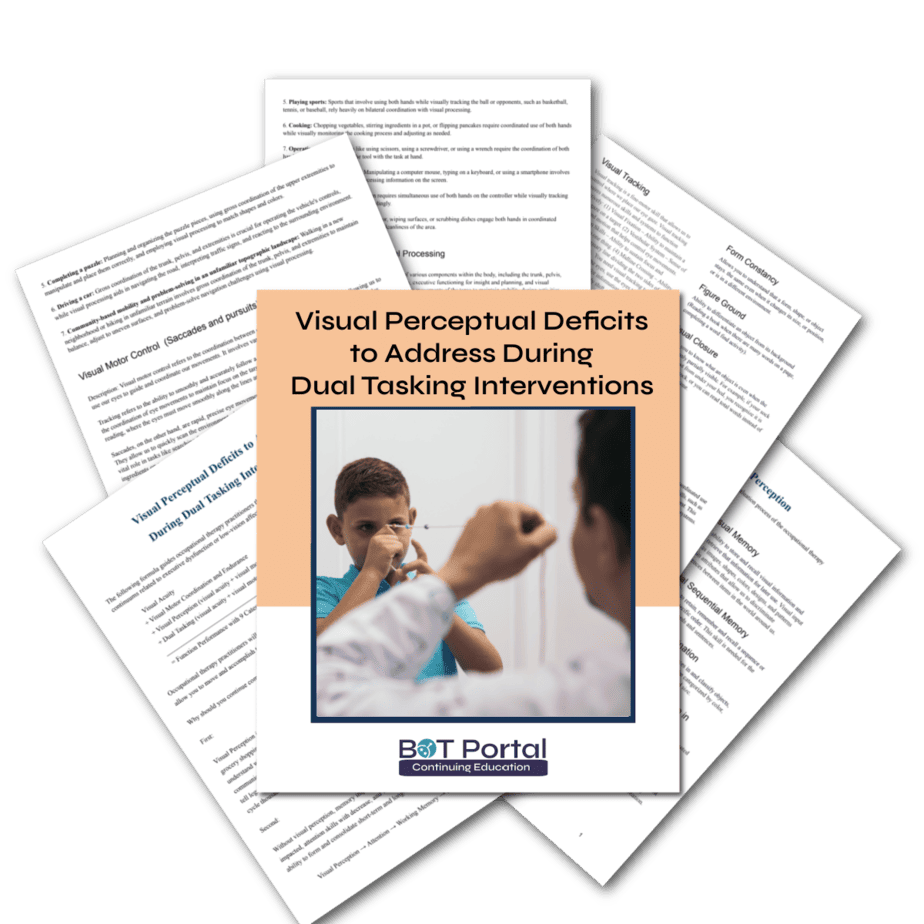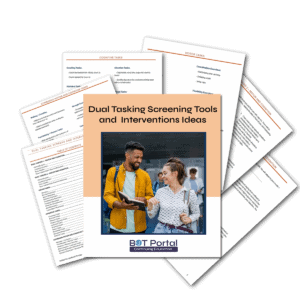Description
Visual Perceptual Deficits to Address
During Dual Tasking Interventions
Visual perceptual deficits are common sequelae of neurological conditions such as stroke, traumatic brain injury, and neurodegenerative diseases, significantly impacting an individual’s ability to process and interpret visual information. When coupled with the demands of dual tasking, such deficits can pose significant challenges to daily functioning and independence. This printable guide offers a comprehensive overview of visual perceptual deficits and provides evidence-based strategies for addressing these deficits during dual tasking interventions.
Visual perceptual deficits encompass a wide range of impairments, including difficulties with visual attention, scanning, tracking, depth perception, and visual memory. These deficits can manifest as challenges with reading, writing, driving, navigating unfamiliar environments, and performing activities of daily living. Additionally, individuals may experience difficulties with dual tasking, which involves simultaneously performing two or more tasks that require attention and cognitive processing.
During dual tasking interventions, it is essential to address visual perceptual deficits to optimize performance and promote independence. One effective strategy is to incorporate visual scanning and tracking exercises into dual tasking activities, helping individuals improve their ability to efficiently search and process visual information while simultaneously attending to other tasks. Visual memory exercises, such as recalling and reproducing visual patterns or sequences, can also enhance cognitive flexibility and task-switching abilities during dual tasking.
Furthermore, environmental modifications and adaptive strategies can facilitate dual tasking performance for individuals with visual perceptual deficits. Simplifying visual stimuli, reducing clutter, and providing visual cues or prompts can help individuals focus their attention and prioritize tasks effectively. Additionally, breaking down complex tasks into smaller, manageable steps and providing clear instructions can enhance task comprehension and execution.
Multisensory interventions that integrate visual, auditory, and tactile cues can also be beneficial in addressing visual perceptual deficits during dual tasking. By engaging multiple sensory modalities, individuals can compensate for visual impairments and improve their overall task performance. For example, auditory cues or verbal prompts can supplement visual information, helping individuals maintain attention and focus while multitasking.
What is included?
5 pages of visual perception deficits in dual tasking
Other Links:



